Almost 75 percent of the world’s total land area, particularly forests, rangelands and wetlands, has been negatively affected by degradation and transformation, and this figure is likely to increase to more than 90 percent within 30 years.207 The annual economic loss linked to ecosystem degradation is estimated at USD 4.3 trillion–20.2 trillion, with negative impacts on 3.2 billion people.208
FLR is gaining momentum in response to this challenge, as demonstrated by the UN General Assembly’s declaration of the Decade on Ecosystem Restoration (2021–2030). FLR typically involves entire landscapes in which many land uses interact, and its objective is to restore the biological productivity of degraded areas and create long-term carbon sinks in restored soils and vegetation. According to the Global Partnership on Forest and Landscape Restoration, more than 2 billion ha of the world’s deforested and degraded landscapes have potential for FLR. The global mitigation potential of reforestation and afforestation through FLR by 2050 is estimated at 3.9 GtCO2 per year.209
Restoration through agroforestry has the potential to address diverse global challenges. Agroforestry systems tend to be more resilient than conventional agriculture to environmental shocks and the effects of climate change. Depending on the system and local conditions, agroforestry systems can contain 50–80 percent of the biodiversity of comparable natural forests;210 increase food security and nutrition by serving as a safety net; and boost crop productivity. There is renewed interest in agroforestry as a transformative solution to the climate crisis, as demonstrated by its inclusion in the nationally determined contributions (NDCs) of 40 percent of non-Annex I Parties to the UN Framework Convention on Climate Change for both mitigation and adaptation.211, 212 Moreover, about half the 73 developing countries with REDD+ strategies have identified agroforestry as a means for addressing deforestation.211 The Intergovernmental Panel on Climate Change’s Sixth Assessment Report makes specific reference to agroforestry as an effective climate-change adaptation option.213
The following six case studies provide examples of innovations in FLR and agroforestry with potential for scaling up.
Case study 7Developing a new national policy and strengthening the enabling environment to scale up agroforestry
Location: India
Partners: Ministry of Agriculture and Farmers Welfare (India), Center for International Forestry Research and World Agroforestry (CIFOR–ICRAF)
WEIGHTING OF INNOVATION TYPES

The context. India has a long history of agroforestry as a traditional land management system and has been heavily involved in agroforestry research for at least 50 years. Past estimates of the area under agroforestry in the country ranged from 17.4 million ha to 23.2 million ha.214 Until recently, however, agroforestry had not received comprehensive technical or institutional support, and nor had it been covered by the mandate of any ministry. Thus, agroforestry had generally fallen through the cracks of policy domains – a problem that is not unique to India and reflects agroforestry’s multifaceted nature at the intersection of agriculture, forestry, the environment and rural development. Agroforestry requires diverse expertise in tree, crop and livestock management. A lack of comprehensive extension services makes agroforestry adoption difficult for farmers; in addition, a lack of recognition by government extension services of the agroforestry knowledge held by local farmers makes it harder to improve the performance of existing agroforestry practices and to foster innovation. Other barriers include inadequate regulatory frameworks and incentives (and in some cases restrictive regulations), a lack of institutional finance and safety nets for farmers, the unavailability of high-quality planting material, and inadequate market access. These and other challenges have meant an insufficient enabling environment for the expansion of agroforestry in India.
The innovation. Acknowledging these structural issues, the Government of India, through the Ministry of Agriculture and Farmers Welfare and facilitated by CIFOR–ICRAF, developed the intersectoral National Agroforestry Policy in 2014. The policy aims to address bottlenecks in scaling up agroforestry and remove barriers to adoption in a systemic manner. The policy’s goals are to increase productivity through agroforestry and to meet the increasing demand for timber, food and non-timber forest products. The policy is also crucial for achieving India’s goal of increasing national tree cover by 33 percent, thereby contributing to the country’s NDC. The overarching objective is to contribute to improving the livelihoods of rural farming populations, ensuring food security and protecting ecosystems.
The policy was the first in the world to promote agroforestry at a national level. By bridging various areas of natural resource management, it enabled the convergence, strengthening and expansion of existing agroforestry mandates and programmes and simplified regulations related to the harvesting and transportation of trees grown on farmlands. Under the policy, a land-records database and a market information system have been developed to ensure land-tenure security and market access. A common platform has been provided to empower all stakeholders to jointly plan and identify priorities and strategies; enable greater interministerial coordination, programmatic convergence and financial resource mobilization; and leverage capacity development and technical and management support.
Results and impacts. The National Agroforestry Policy has provided multiple monetary and non-monetary incentives to promote agroforestry in the country; in 2016, for example, the Government of India approved its first agroforestry budget, worth USD 150 million. The policy has helped increase the number of trees outside forests: one year after it came into effect, the Forest Survey of India reported an increase of 88.7 million m3 in the total volume of trees outside forests. According to the most recent estimate, agroforestry is now being practised on more than 28.4 million ha in India,214 and an estimated 65 percent of the country’s timber and almost half its woodfuel come from trees grown on farms, although the potential is far greater.215
The existence of strong policy support for agroforestry has triggered investment in technologies to assist uptake, such as numerous mobile applications that are proving useful in overcoming gaps in extension services and enabling farmers to leverage technologies and adapt agroforestry to their own situations. For example, Odisha State released an agroforestry app (developed with support from CIFOR–ICRAF) in 2021 that provides, in a single platform, comprehensive information on trees and crops and packages of practices. The app enables farmers and extension workers in the state to identify the right agroforestry species for farms and provides them with detailed information on integrated agroforestry systems, the availability of planting material, and the location of nurseries. Upon the entry of key parameters, such as district, season, topography, land use and intervention type, the app makes recommendations on suitable crops, trees and agronomic practices and suggestions for beneficial tree and crop combinations. The app has been downloaded by users in more than 120 countries (despite being intended only for Odisha State), indicating a clear demand for this type of support.
Potential for scaling up. India’s National Agroforestry Policy paved the way for other countries that have now developed their own agroforestry policies or strategies, including the Democratic People’s Republic of Korea, the Gambia, Kenya, Nepal, Rwanda, South Africa and the United States of America; Nepal’s (2019) national policy was founded on India’s experience. Developing national policies and strategies is a key pathway for creating enabling environments and sustainably scaling up agroforestry.
To complement these policy innovations, apps are an important solution for overcoming gaps in extension services and enabling farmers to leverage technology and adapt agroforestry to their contexts. A global agroforestry app could be developed using existing databases with capability to be adapted to local contexts through national partnerships. Such an app would enable continuous improvements with new data and strengthen monitoring, design and implementation.
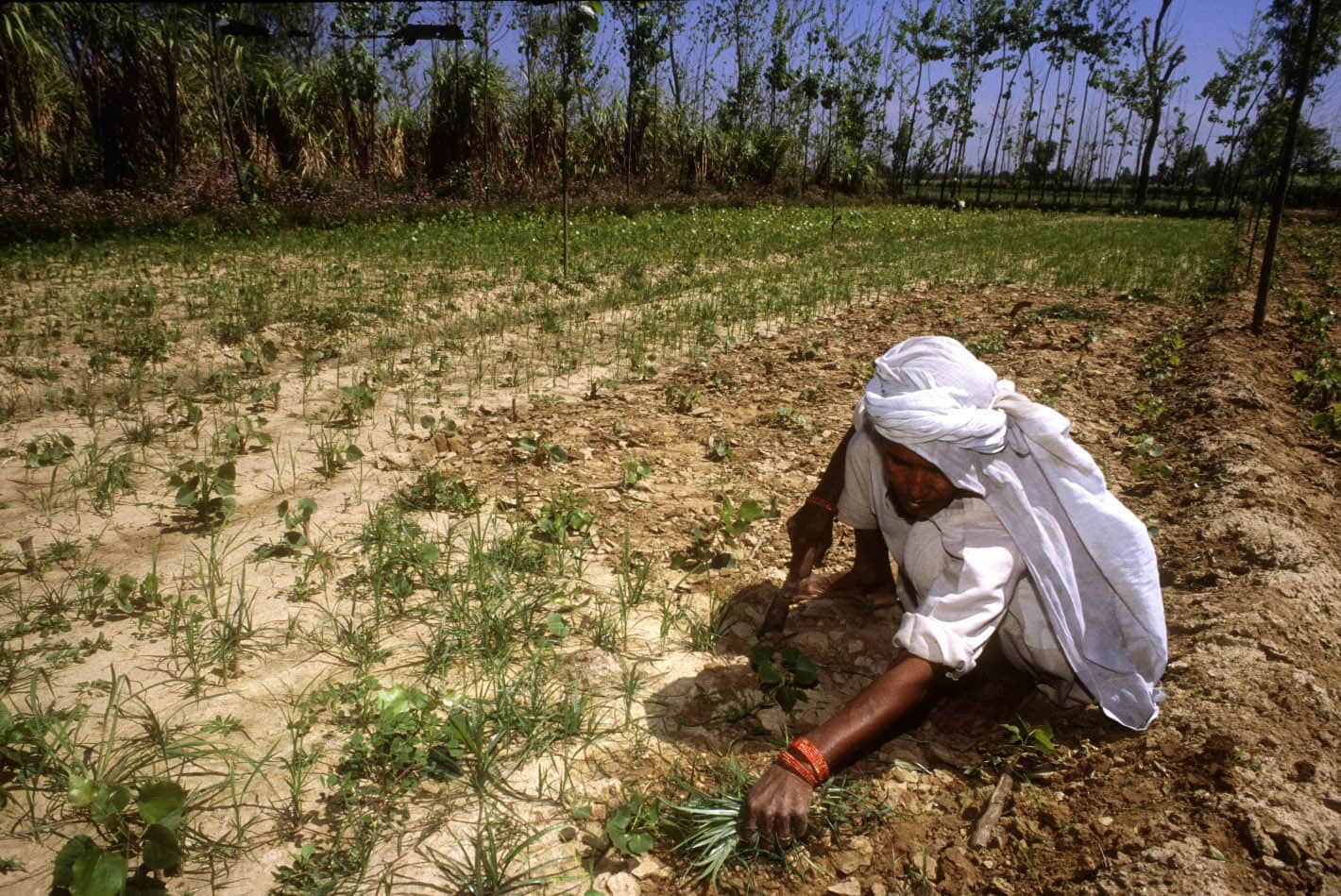
© FAO/Giuseppe Bizzarri
Case study 8Integrating the socioeconomic objectives and nutritional needs of local communities into restoration to combat desertification
Location: Burkina Faso, Eritrea, Ethiopia, the Gambia, Mali, Mauritania, the Niger, Nigeria, Senegal and the Sudan
Partners: FAO, Great Green Wall national agencies and coordination units, village communities, Pan-African Agency of the Great Green Wall
WEIGHTING OF INNOVATION TYPES

The context. The African Union launched the GGW initiative in 2007 as an urgent response to the detrimental effects of desertification, drought and climate change in the Sahel. Few of the initiative’s large-scale restoration actions, however, seek to address the socioeconomic challenges facing dryland communities, such as food insecurity, malnutrition and poverty, contributing to an overall low success rate for restoration outcomes. Conversely, land degradation and associated biodiversity loss, coupled with increasingly harsh environmental conditions, have contributed to persistent acute malnutrition in the region, and many people suffer prolonged periods of hunger. International interventions in the Sahel have inadequately considered the potential of restoration for addressing malnutrition, particularly “pre-farm gate” – that is, consumption pathways that optimize the use of native plant diversity to improve nutrition outcomes.
The innovation. Recognizing the close relationship between landscapes and livelihoods, FAO’s Action Against Desertification (AAD) programme216 developed a blueprint for large-scale restoration that builds climate and nutritional resilience into its interventions. The core innovation has been to put the plant knowledge and interests of rural communities at the heart of the intervention process, prioritizing their species preferences for planting and their socioeconomic needs. One-third of the more than 200 wild species preferred by communities are food plants, and they also have high market value. Many wild plant species, including many used as food, are typically rich in micronutrients and have very high nutritional content.116, 117
Five main value chains were also developed for NWFPs derived from wild plants with the aim of increasing incomes and thus providing an incentive to conserve native agrobiodiversity, as well as offering immediate economic relief for households (particularly benefiting women and youth). Wild edible tree fruits and nuts were a particular focus, given that FAO assessments in Sokoto state, Nigeria, found these to be consumed by up to 86 percent of households.
In addition to planting the right species at the right time, the supply of genetically diverse, high-quality tree seeds is crucial for restoration. A germplasm mobilization assessment conducted in six GGW countries by FAO in collaboration with research institutes in Ghana and Kenya in 2019 showed that relying exclusively on official public seed systems (e.g. national tree seed centres) was insufficient for large-scale restoration because of supply bottlenecks. FAO’s innovative model of engaging and training rural communities living in the vicinity of natural seed stands enables those communities to not only select their preferred species and restoration objectives but also to directly perform seed-saving and tending functions. Women-led cooperatives have made it possible to supply the seeds (and other genetic material) needed to meet restoration targets. These cooperatives represent social innovations that are enabling communities to roll out and scale up the science of seed selection, collection and propagation.
Results and impacts. Over six years, FAO worked with more than 100 000 households in 600 villages to collect 150 000 kg of seeds from 110 selected resilient native woody and herbaceous plant species on more than 100 000 ha of degraded agrosilvopastoral lands. Independent remote-sensing assessments of regreening and growth rates revealed positive impacts, including – unexpectedly – an increase in vegetation for (on average) 1 km beyond restored plots, with communities gaining quick returns by harvesting grasses as fodder for livestock. The consultative and participatory process was vital for responding to the urgent need for revegetation that addressed nutrition, health and livelihoods. Food-insecurity experiencesaa declined sharply – from 46 percent to 15 percent in Senegal, from 69 percent to 58 percent in the Niger and from 90 percent to 25 percent in Nigeria. The interventions sequestered an estimated 0.384–1.27 million tCO2 equivalent of greenhouse gases. Communities were motivated to manage the broad spectrum of planted vegetation, contributing to an average of 60 percent seedling survival and impressive growth rates after three rainy seasons.218, 219
Potential for scaling up. The GGW seeks to restore 100 million ha of degraded lands in the Sahel between 2021 and 2030, an unprecedented opportunity to develop biodiverse, resilient and nutritious landscapes. The success of FAO’s AAD programme derives from social and organizational innovations spanning the agriculture, forest and health sectors and including women-led restoration committees, consultative planting processes and nutrition-sensitive restoration. These, combined with technological innovations such as mechanized land preparation for efficient rainwater harvesting, are now essential components of restoration, climate action, biodiversity conservation and sustainable use in the region.220–224 Given that the GGW is far from achieving its 100-million ha goal, it is imperative to find effective ways of increasing the rate of restoration. The innovations described here offer scope for doing so by empowering local communities to use restoration for their clear benefit, and they also have significant potential in dryland agrosilvopastoral systems elsewhere, such as in Southern Africa and Central Asia.

© FAO/Moctar Sacande
Case study 9Developing the Framework for Ecosystem Restoration Monitoring platform through collaboration and data interoperability
Location: Global
Partners: FAO, UNEP, Convention on Biological Diversity (CBD), Taskforce on Monitoring, Taskforce on Best Practices, other partner organizations
WEIGHTING OF INNOVATION TYPES
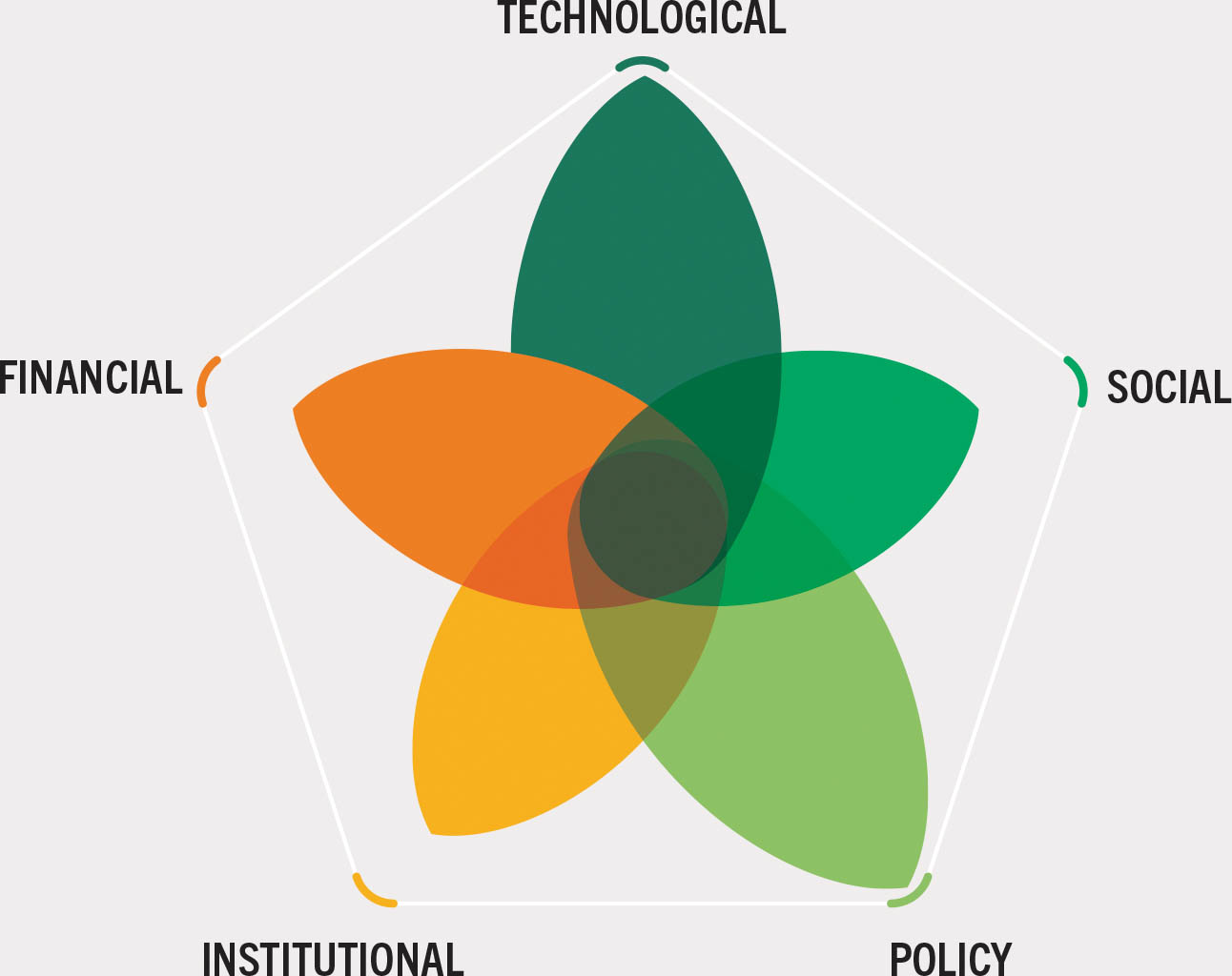
The context. The UN General Assembly declared 2021–2030 as the Decade on Ecosystem Restoration with the aim of supporting and scaling up efforts to prevent, halt and reverse the degradation of ecosystems worldwide. Co-led by FAO and UNEP, implementation of the Decade is facilitated through extensive collaboration with countries, UN agencies and partner organizations. To streamline implementation, five taskforces have been established as part of the Decade’s governance structure, with FAO leading the Best Practices Taskforce and the Monitoring Taskforce.
There is a need for effective tools, platforms and data to increase access to restoration-related data, information and indicators and to guide decision-making and the monitoring of progress. A major response to this challenge is the collaborative development of a platform called the Framework for Ecosystem Restoration Monitoring (FERM) through the joint efforts of the FAO-led taskforces.
Parties to the CBD have adopted an ambitious restoration target, Target 2, as part of the Kunming–Montreal Global Biodiversity Framework – it is to “ensure that by 2030 at least 30 per cent of areas of degraded terrestrial, inland water, and marine and coastal ecosystems are under effective restoration, in order to enhance biodiversity and ecosystem functions and services, ecological integrity and connectivity.” As the lead agency in the Best Practices Taskforce and the Monitoring Taskforce, FAO is responsible for supporting the CBD Secretariat and Parties in developing the monitoring and reporting methodology for the Target 2 indicator, which focuses on the area under restoration. The operationalization of FERM is crucial for assisting countries in collecting and reporting data on areas undergoing restoration.
The innovation. FERM leverages the latest geospatial technology to serve as the official monitoring platform for tracking global progress and disseminating good practices throughout the UN Decade. It also supports countries in monitoring and reporting areas under restoration towards Target 2.
FERM builds on and complements established global, regional and national reporting procedures and aligns with their objectives, targets, criteria and indicators. By consolidating these efforts in a unified framework, FERM aims to reduce the reporting burden on countries by providing individuals, communities and countries with access to the geospatial data, methodological guidance and monitoring tools they need for tracking the progress of ecosystem restoration initiatives.
FERM operates on the principle of interoperability, building on existing efforts to map, monitor and comprehensively report areas under restoration. Through the collaborative network of partners in the FAO-led taskforces, FERM works with partners such as the GEF, Restor, the International Union for Conservation of Nature’s Restoration Barometer, the UN Convention to Combat Desertification’s Land Degradation Neutrality reporting platform, the Great Green Wall Accelerator, the UNEP–World Conservation Monitoring Centre’s Nature Commitment Platform, and the Brazilian Restoration Observatory to map the data they are collecting to common parameters, facilitate data-sharing and quality-checking, and identify opportunities for alignment.
The integration and interoperability of monitoring tools and platforms can enhance and simplify the user experience for restoration practitioners. For example, FERM integrates projects and data from the GEF into the UN Decade Monitoring Framework. Efforts are ongoing to compile, share and integrate data from other platforms, and organizations are working to integrate data exchange and interoperability into FERM.
Results and impacts. FERM includes:
▸ the FERM geospatial platform, which enables the visualization of progress and provides indicators and data that are crucial for monitoring ecosystem restoration. It is interactive, and it can generate data and maps and create compelling narratives of restoration impacts. Using remotely sensed geospatial data and statistical time series, the FERM platform facilitates analysis of public and private restoration-related data at the global, regional, national and subnational scales;
▸ the FERM registry, which streamlines the collection and harmonization of area-based data related to ecosystem restoration initiatives, projects and programmes and simplifies interoperable data exchanges with other platforms. The FERM registry also enables the documentation of good practices associated with the registered initiatives. As of February 2024, the platform had 355 registered users from 80 institutions, 150 initiatives had been documented across 57 countries, and 20 good practices had been submitted. The FERM registry will serve as the official entry point for countries to report on Target 2; and
▸ the FERM search engine, which disseminates restoration good practices collected from four collaborating platforms, including the FERM Registry, thereby offering stakeholders access to over 1 500 good practices (as of February 2024). Users can efficiently search, filter and access a wide range of good restoration practices according to their specific needs.
Potential for scaling up. As the official monitoring platform of the UN Decade and for Target 2 of the Kunming–Montreal Global Biodiversity Framework, FERM will be strengthened over time and in response to the needs of countries, CBD Parties and restoration practitioners.
FAO is working with partner organizations towards data harmonization and interoperability to improve FERM functionalities. Case studies on data exchange will be introduced to provide insights into and examples of successful practices and innovations. A dashboard will be incorporated, offering compiled data on ecosystem restoration and comprehensive information on progress towards commitments, area under restoration (disaggregated by country, ecosystem and initiative), and good practices. It will display these elements spatially using geospatial data and provide interactive maps for data visualization and links to national databases, thereby improving transparency. These features will be accessible at the global and national levels.

© Maryia Kukharava
Case study 10Enhancing the resilience of traditional water taro gardens by incorporating new technologies, practices and plant varieties
Location: Vanuatu
Partners: FAO, Vanuatu Department of Agriculture and Rural Development (Ministry of Agriculture, Livestock, Forestry, Fisheries and Biosecurity)
WEIGHTING OF INNOVATION TYPES
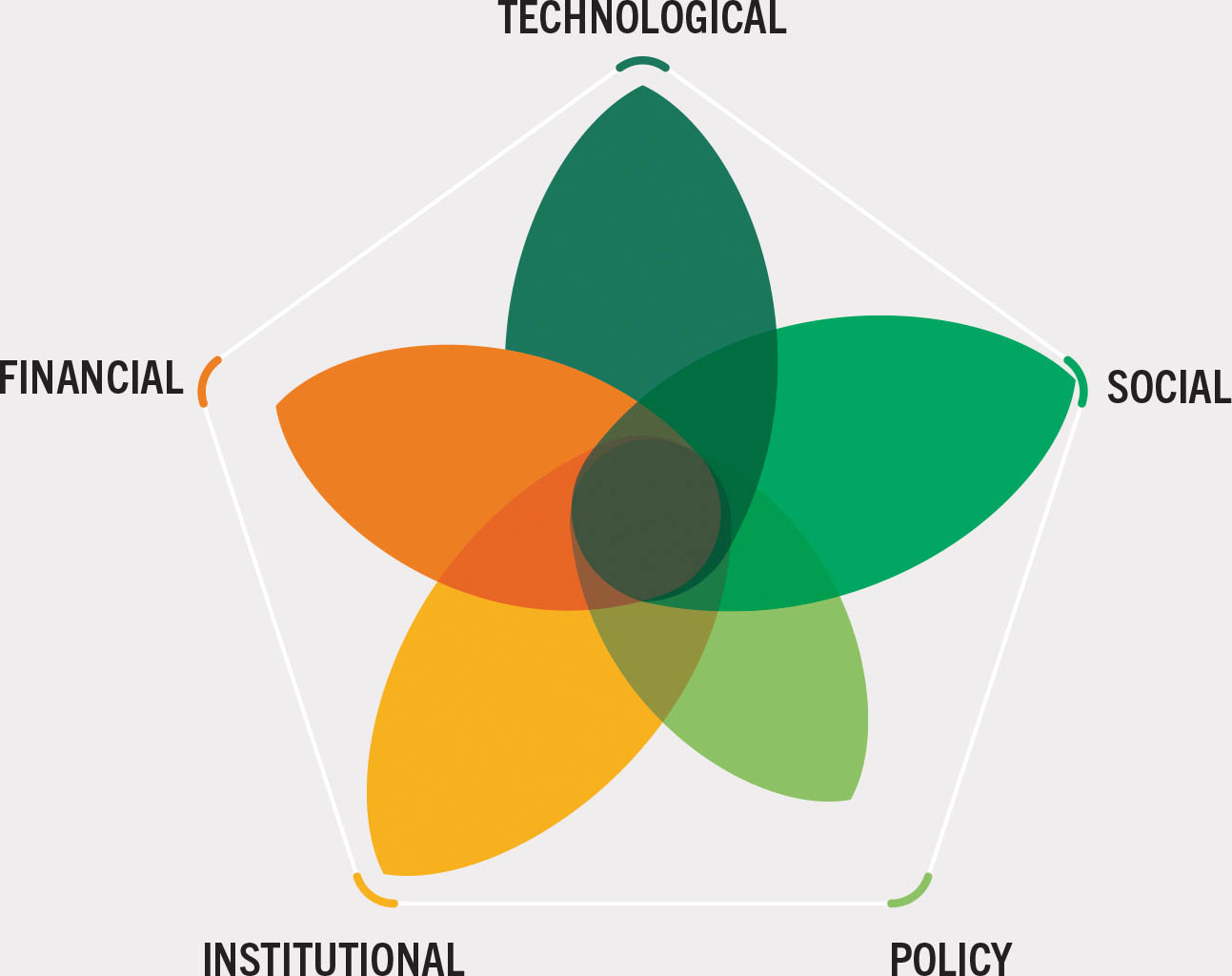
The context. The continued provision of forest ecosystem services is crucial in Vanuatu for meeting food-security challenges. Taro – a root vegetable that is a food staple in Vanuatu – requires a sustained supply of water at all stages of production to maintain yields and support plant development, particularly during dry seasons. Water taro gardens are a traditional agroforestry practice in the country that makes use of the nutrient- and water-quantity-regulating functions of forests to produce taro and other crops. Water taro gardens are able to recover quickly from disasters and climate shocks and stresses and have been important for maintaining local food security during supply-chain disruptions. The deterioration of forests, however, has reduced the capacity to provide water for the gardens, posing a threat to the viability of this agroforestry system and to local food security and livelihoods.
The innovation. Consultations led by the Vanuatu Department of Agriculture and Rural Development were held with Indigenous Peoples, local communities, government agencies and other stakeholders to identify challenges, needs and opportunities related to improving the productivity and resilience of water taro gardens. With technical and funding support from FAO related to resilient agroforestry systems, analysis was conducted on the suitability of locations for the expansion of gardens, as well as on gaps in knowledge, inputs and technology. Based on this, a package of innovative approaches was introduced to strengthen the sustainability of water taro gardens in the face of climate change. For example, climate-resilient water taro varieties and training programmes on sustainable water management practices were introduced. Complementing this, new practices and technologies have been adopted, such as drip irrigation; improved small-dam-construction, water-diversion and rainwater-harvesting techniques; and water-efficient farming practices such as aquaponics.
Results and impacts. The package has helped improve water-use efficiency and increase water availability throughout the year. Importantly, improved approaches for sustainable forest management, including biodiversity conservation, have helped maintain the recharge function of water sources for taro fields.
The provision of tools and equipment for the construction and maintenance of gardens has also helped address issues such as soil erosion. Taro gardens are often located on steep slopes, which increases the risk of soil erosion during heavy rain. To prevent it, existing agroecology techniques not previously used widely by farmers in Vanuatu have been introduced, such as contour farming, terracing, and cover crops such as legumes, grasses and green manure. Farmers have also drawn on approaches informed by traditional knowledge to boost the productivity and resilience of water taro garden systems, including companion planting to minimize plant pests, mulching, composting, and crop rotation.
By adopting a suite of innovations, Vanuatu farmers have been able to maintain the viability of their water taro systems, with a total of 419 ha in production in 2023.ab This is important given the role these systems play in ensuring the stability of local food-supply chains, as they did in the aftermath of twin cyclones in March 2023. The innovations are also enabling farmers to increase yields, reduce their vulnerability to climate change and enhance their livelihoods.
Another important result has been the improvement of water management practices. Through the work to improve the sustainability of water taro gardens, communities have become more aware of the need to conserve and manage water resources efficiently. This has led to a reduction in water waste and an overall improvement in water quality, including through reduced runoff, more efficient water use, reduced leaching of fertilizers and chemicals, and less soil erosion.
In addition to these benefits, taro water gardens are contributing to the preservation of traditional knowledge and practices. Taro cultivation has long been an important part of Vanuatu’s cultural heritage, and the continued development of the water gardens has helped ensure that this knowledge is passed on to future generations.
Potential for scaling up. In Vanuatu, there is an opportunity to expand the area of water taro gardens by refurbishing abandoned gardens over a total area of about 1 033 ha by 2030. This would produce a projected 14 500 tonnes of taro annually,ac which would be about three times the production in 2023 due to the increased area under cultivation and increased yields per hectare from improved management. A survey showed widespread community acceptance, with more than 50 percent of farmers across Vanuatu adopting the innovations. Scaling up will involve trade-offs between taro cultivation and other economic activities such as tourism and infrastructure development.
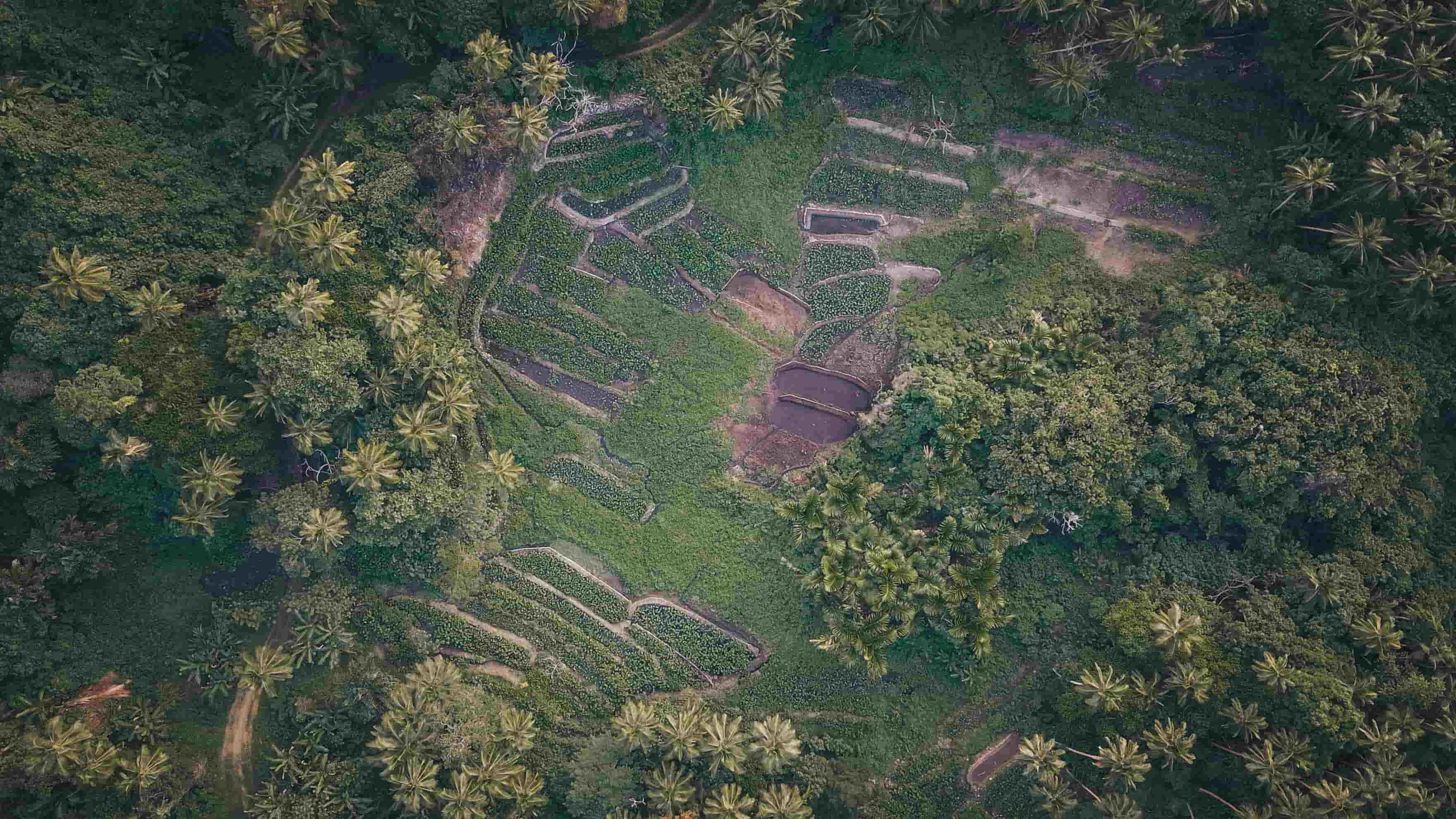
© FAO
Case study 11Improving the local governance of forest resources to deliver benefits for agriculture and forest restoration
Location: Morocco and Tunisia
Partners: FAO, International Center for Agricultural Research in the Dry Areas
WEIGHTING OF INNOVATION TYPES
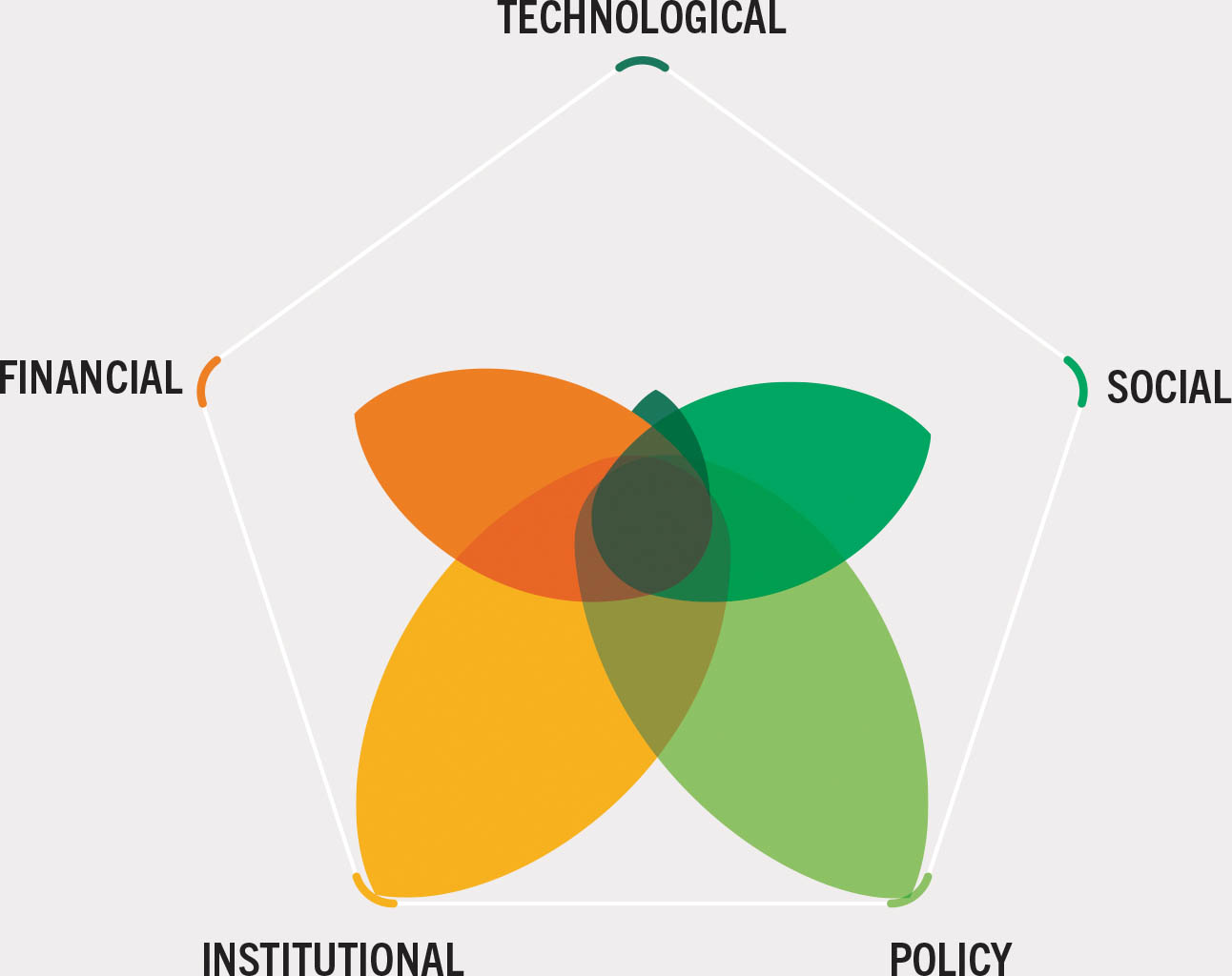
The context. In many dryland areas in North Africa, forest and rangeland policies encourage restoration initiatives that encroach on the grazing lands of pastoralist communities. Grazing is a widespread practice that can have negative impacts on forests, especially when there is overstocking, a loss of traditional practices, and an absence of community involvement. When conducted sustainably, however, through a practice known as silvopastoralism – that is, the integration of grazing, tree cultivation and restoration – grazing and restoration can both thrive.
Promoting silvopastoralism through forest and rangeland policies brings significant benefits for both land restoration efforts and pastoral communities. It can enhance quality of life and the local environment and economy, thereby representing a win–win for all stakeholders.
The innovation. In Tunisia, the Sustainable Silvopastoral Restoration to Promote Ecosystem Services project implemented by FAO, the International Center for Agricultural Research in the Dry Areas and the Direction Générale des Forêts de Tunisie focused on enhancing the productivity and resilience of silvopastoral systems through sustainable practices. This included an innovative approach involving the reseeding of ecosystems with sulla (Hedysarum coronarium), a native legume, which serves as a valuable source of grazing biomass for livestock and contributes to soil and water conservation. The project also assessed the regeneration of various shrubs and trees, such as saltbush, carob, medic tree and cactus pear, to support livelihoods while providing shade for crops and fodder for livestock.
For silvopastoral systems to flourish, more inclusive policies and good governance are needed to create an enabling environment for grazing with trees. Morocco initiated an innovative compensation programme using a legal framework established in 2002, under which the state offers financial incentives to forest users – organized in local grazing associations – who agree to respect the exclusion of grazing from restoration sites. Through their associations, communities are accountable for the protection of their lands; they schedule grazing periods to avoid overgrazing and allow land to recover.
Results and impacts. Soil protection and rehabilitation are important impacts of the programme. In Tunisia, the biomass yield at sulla reseeding sites was assessed as ten times higher than at the control site, showing the importance of silvopastoral systems that enhance the pastoral value of natural ecosystems. The cost of feeding livestock was TND 0.35 (about USD 0.12) per head per day at the restored site, compared with TND 0.90 (about USD 0.30) at the control site. This cost reduction highlights one of the significant benefits of the silvopastoral system – it is a more economically efficient and sustainable approach to livestock management.
In Morocco, the number of grazing associations and members has increased steadily since the start of the compensation programme. By 2019, more than 175 local grazing associations had been created and 101 000 ha of dryland forest had been closed to grazing to enable restoration, with association members compensated for their conservation efforts. The increase has coincided with an improvement in reforestation success rates and a significant reduction in grazing offences.
Potential for scaling up. Two lessons arising from these efforts can support their scaling up. The first is the importance of multifunctional land use in restoration projects. In Morocco, integrating grazing and other land uses is providing benefits for both the environment and local communities. The second lesson is that good governance involving local communities in decisions taken by government ministries is vital for ensuring long-term sustainable land use. In Morocco, the co-creation of the compensation programme by government, local communities and pastoralist groups is a fundamental aspect of its success; it is noteworthy that the scheme is funded through a levy on wood imports, which has facilitated its upscaling.ad
In Tunisia, community-based organizations have proved an essential ingredient in the success of the silvopastoral project. Through such organizations, agreements have been developed between the silvopastoral community and local authorities to control grazing based on the availability of forage and livestock demand using accurate estimates of carrying capacity.
The increased community involvement has made more prominent the importance of local knowledge in managing silvopastoral systems. It is essential that government policies recognize this and link it with scientific research as a basis for policy decisions.

© ICARDA/Mounir Louhaichi
Case study 12Linking a 20-year-Long agroforestry initiative with carbon trading to foster sustainable practices
Location: Mozambique
Partner: FAO
WEIGHTING OF INNOVATION TYPES
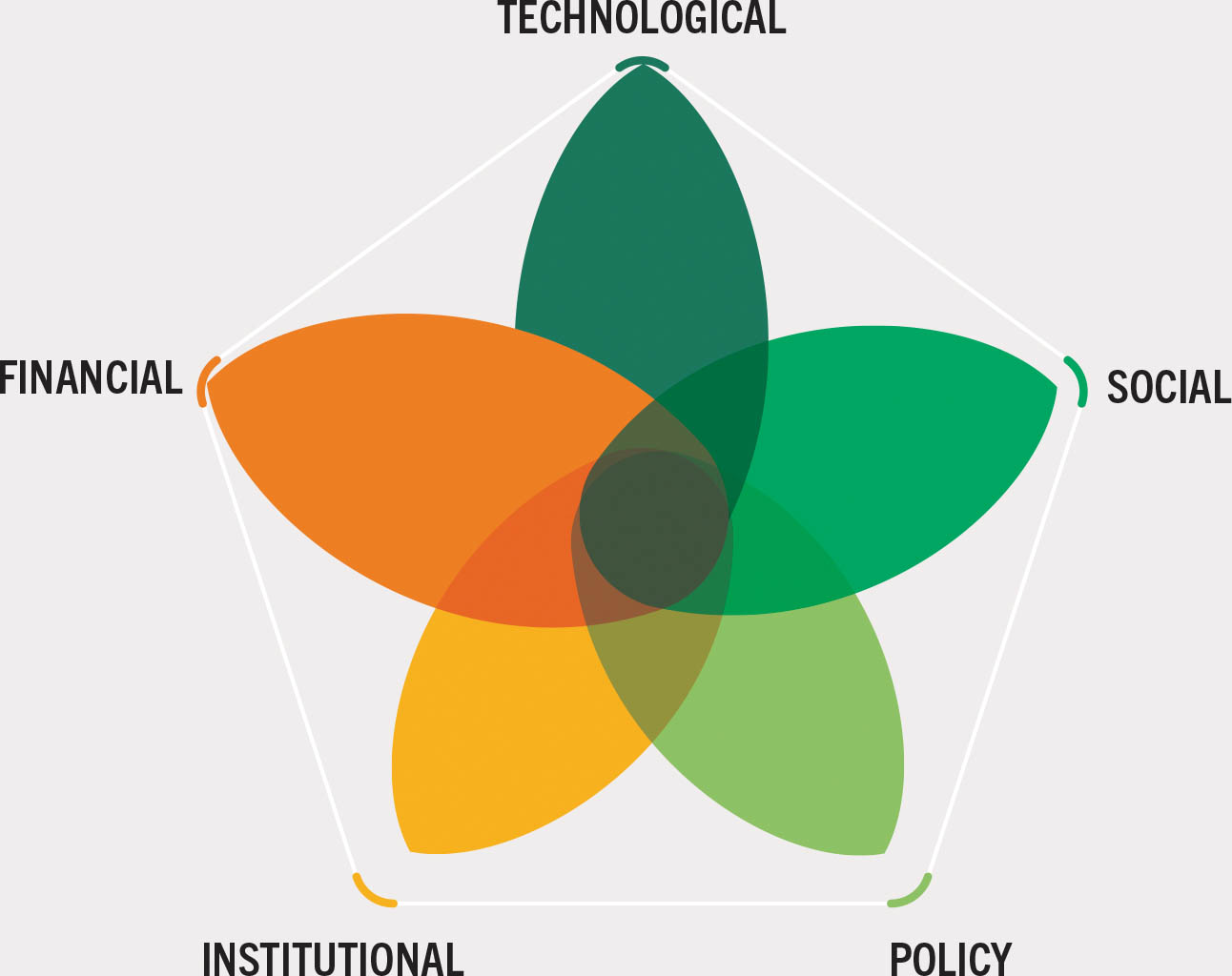
The context. Rural Mozambique faces numerous environmental challenges. Climate change is leading to erratic rainfall patterns, prolonged droughts and destructive floods. Drought and flooding may both occur in a single cropping season, with devastating impacts on the food security, livelihoods and socioeconomic sustainability of smallholder farmer households and communities. Smallholder farmers – who make up nearly all (98.7 percent) of the 4.3 million farmers in Mozambique225 – mostly practise traditional farming methods such as shifting cultivation, which, despite benefits, may contribute to the degradation of natural resources and lock smallholders into poverty. Agroforestry is emerging as a sustainable solution in Mozambique for the environment and the well-being of smallholder farmers.
The innovation. FAO is in the first year of implementing a pilot initiative to expand agroforestry in Mozambique through PROMOVE Agribiz, a programme funded by the European Union. The agroforestry models being introduced, adapted to Mozambique’s various agroecological zones, feature the following innovations:
▸ Diversification – agriculture production is being diversified by increasing the range of products and income sources while also increasing food security and climate-change mitigation and adaptation. Additional products are linked to existing value chains.
▸ Long project duration with private-sector partnerships – the project will span 17–20 years (the typical duration of carbon-credit registered projects), far exceeding the typical lifespan of donor-funded projects (3–5 years). The project involves a strong partnership with private-sector actors, including Acorn (a Rabobank programme), Plan Vivo, Farm Tree, and buyers of carbon removal units (CRUs),ae which enhances sustainability and will ultimately facilitate the transition of project management to a private entity when the project ends.
▸ Project budget invested in incentives – the donor funds are being used as initial capital to generate income through the sale of CRUs (the minimum value of which is EUR 20 per unit). In this project, EUR 2.5 million contributed by the European Union is projected to generate EUR 10.7 million through carbon trading. Smallholder farmers are expected to benefit from the sale of CRUs through the project, with technological advances enabling the measurement of carbon stock on areas as small as 0.25 ha. It is expected that 80 percent of the CRUs produced will be paid to smallholder farmers after the third year either through credits or other benefits, such as capacity development.
▸ Digitalization and technology – information technologies accessible to smallholders are enabling cash transfers and the registration of farm units by mobile phone. Agricultural inputs, including seedlings, are being subsidized through e-vouchers. Carbon stocks are being measured and verified, with real-time accountability.
▸ Capacity development – the Farmer Field School (FFS) methodology has been adapted to agroforestry.
Results and impacts. Under the project, about 22 000 smallholder farmers have received training in agroforestry practices through 700 FFSs and 700 learning plots and 5 000 are expected to join the agroforestry-for-carbon-trade pilot. About 120 000 trees have been planted for training purposes, and 37 community nurseries have been established within the FFS network.
By the end of the project, the 5 000 beneficiaries of the initiative are expected to have planted 1.7 million trees on about 5 000 ha of land. Smallholders have the potential to sequester up to 4 CRUs per ha per year during the 17–20-year duration of the project, with payments beginning in the third year based on annual carbon sequestration.
FFS manuals have been enriched with this experience. The involved smallholder farmers have embraced agroforestry enthusiastically, fostering a shift towards sustainable and climate-resilient farming methods. The traditional agriculture paradigm is evolving towards sustainable agriculture, emphasizing minimal-input consumption (e.g. only organic fertilizers); improving nutrition (e.g. dietary diversification) and income at the household level (an estimated 20 percent increase); enhancing soil nutrients; conserving water reserves; promoting biodiversity; and increasing the climate resilience of farms.
Potential for scaling up. The PROMOVE Agribiz agroforestry model is being adopted in another project (funded by the Government of Italy and implemented by FAO) in Mozambique. Depending on the availability of finance, it could be expanded to include the other 17 000 FFS members in PROMOVE Agribiz.
Continuous support and capacity development is needed to ensure that farmers can implement and maintain agroforestry in the long term. Ensuring the integrity of CRUs and the cost-effectiveness and accuracy of measurement is also a challenge.
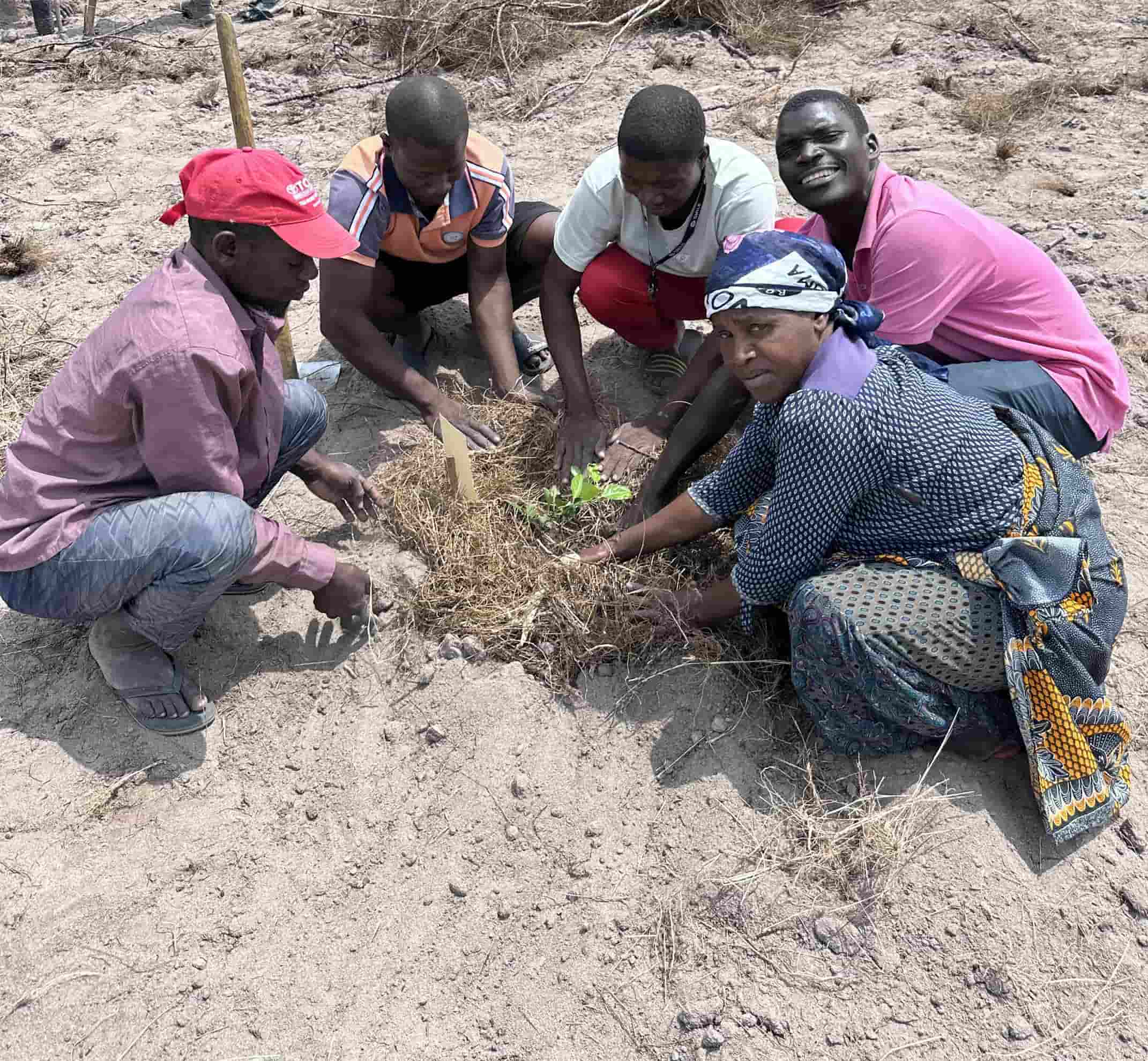
© FAO/Bianca Sipala

